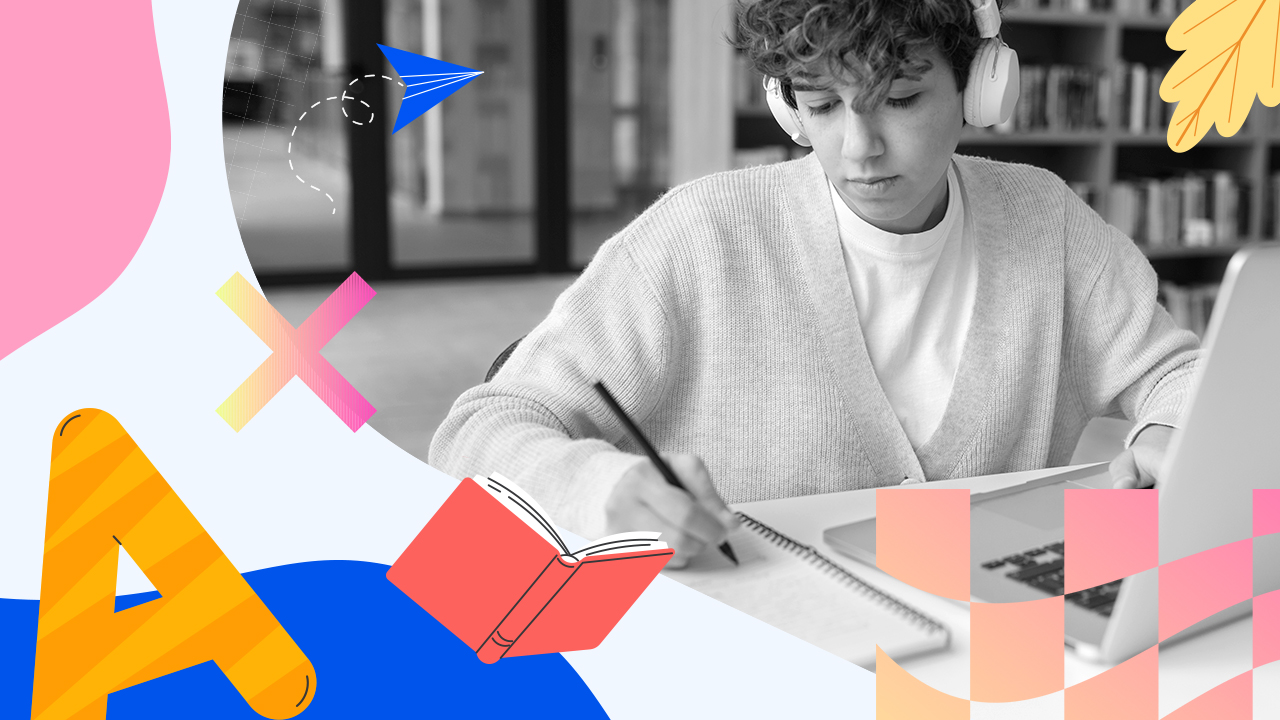Active Listening & Note-Taking: Keys to Academic Success
Navigating today’s academic journey feels akin to sailing in vast, uncharted waters. The tools of active listening and note-taking are your compass and map. They’re not just tools but lifelines for students eager to carve their paths through the dense forests of knowledge and for educators, the artisans shaping the minds ready to absorb this wisdom.
Consider a classroom, not a space filled with desks and chairs but a vibrant ecosystem where every spoken word plants a seed of understanding. Here, notes transform from simple marks on paper to intricate maps charting the terrain of knowledge. This transformation isn’t solely about chasing higher grades or polishing teaching accolades; it’s about creating a realm where connections with learning materials deepen, comprehension blossoms and every learner and educator is empowered to unleash their fullest potential.
As we set sail on this exploration, you’ll uncover the essence and practicality of active listening and note-taking. This guide isn’t just a collection of strategies; it’s a beacon designed to illuminate your academic voyage, making the act of learning and teaching not only more engaging and efficient but profoundly impactful.
Let’s embark on this expedition, united in our quest to unravel the mysteries of active listening and note-taking. Along the way, you’ll gather not merely the theory but also a wealth of practical wisdom poised to reshape your approach to learning and interaction with the educational landscape.
Active Listening: The Foundation of Academic Growth
Dive deep into the essence of active listening and envision it not merely as the act of hearing but as a sublime craft of comprehension. This skill animates the spoken word, transforming soft murmurs of information into thunderous revelations of insight. Within the lively nexus of a classroom, active listening cultivates the fertile ground from which the seeds of learning sprout, blossoming into rich gardens of understanding.
Why, you might ask, does active listening claim such a pivotal role in education? The answer lies in the magic it weaves—fostering environments rich with engagement and curiosity. When students listen actively, they’re not merely absorbing words; they’re connecting with ideas on a profound level, paving pathways for understanding, retention, and application of knowledge that resonate far beyond the classroom walls.
But the dance of active listening isn’t a solo performance; it thrives on the rhythm of interaction between educator and student. For educators, this art form offers a window into the minds of their audience, allowing them to tailor their teachings like a sculptor shapes clay, crafting lessons that resonate, engage, and inspire.
Embarking on the mastery of active listening involves embracing several key movements:
- Attention in Full: Like a painter absorbed in their canvas, active listening demands complete focus, a commitment to be present in the moment, undistracted by the noise of the world outside.
- Non-Verbal Symphony: Beyond the spoken words lies a world of communication—gestures, expressions, the ebb and flow of tone—each a note in the symphony of speech, offering depth and context to the verbal melody.
- Feedback, the Echo of Engagement: Active listening is a two-way stream; it’s in the nods, the thoughtful questions, and the paraphrased echoes of understanding that this stream flows strongest, confirming the message has not only been received but resonated.
As we wade deeper into the nuances of active listening, remember that this isn’t a skill bestowed at birth but a craft honed through practice, patience, and perseverance. Like any great art, it begins with the willingness to learn and the courage to transform interaction into an avenue of enlightenment.
Note-Taking Mastery: Navigating Academic Success
At the heart of education, if active listening lays the groundwork for comprehension, then note-taking is the craft that entwines knowledge into the very fabric of our memories. This isn’t just about the physical act of writing down words; it’s a refined skill of capturing wisdom, turning transient ideas into enduring understandings.
Envision each note as a thread in a larger tapestry, every mark a testament to a moment of clarity or a burst of insight. This is a deeply personal interplay between you and the information at hand, a dance where the rhythm and expression are as unique as the individual engaging with them.
Stepping onto the path of note-taking mastery means recognizing its true purpose: it’s not merely about recording data but about forging a bridge from fleeting comprehension to lasting insight. This journey is lined with an array of strategies, each tailored to the diverse ways we perceive and process the world around us:
- Linear Narratives appeal to those who see life as a series of unfolding stories, where information meanders like a river through the landscape of our minds.
- Mind Maps cater to visual learners, for whom understanding sprawls like a vast, interconnected terrain, with each idea a notable landmark.
- The Cornell Method offers structure to those who thrive on organization. It segments the note-taking canvas into distinct areas for cues, detailed notes, and summaries.
Yet, the true essence of note-taking goes beyond these methods. It lies in filtering through the myriad of information to grasp truly valuable insights. It’s about crafting a personal shorthand that resonates with your innermost thoughts, simplifying complex concepts into symbols that speak volumes to you.
As note-taking evolves, it mirrors the adaptability of a chameleon, seamlessly blending with the subject matter at hand. Whether it’s the narrative depth of literature, the precision of scientific formulas, or history’s rich layers, each discipline demands a tailored approach to capture its essence.
In honing our note-taking abilities, remember that these notes transcend the confines of academics; they are notes for life. They embody a mindfulness practice, a chronicle of our learning journey, and a guide to mastery. Through this art, we aim not just to memorize but to truly comprehend, to connect deeply, and, ultimately, to flourish.
Listening & Note-Taking Synergy: Harmonizing for Academic Excellence
In the symphony of learning, active listening and note-taking are not solo performers but a duet, harmonizing to create a melody that resonates with clarity and depth within the learner’s mind. This fusion is not merely a strategy but a dance of cognitive engagement, where the listener actively participates in the conversation of knowledge.
- The Confluence of Listening and Notation is where magic happens. As we listen actively, we’re not just hearing; we’re engaging with the ideas, feeling the rhythm of the argument, and sensing the passion behind the words. And as we take notes, we’re not merely transcribing but translating—a live performance of thoughts into a personal script that can be revisited and relived.
- Intent Listening as the Prelude. It begins with listening with intent, tuning into the nuances of the lecture as one would to the subtleties of a complex musical piece, and identifying the themes and motifs that will form the backbone of your notes.
- Selective Notation as the Composition. Each note on this dance’s page is a deliberate brush stroke, capturing the lecture’s essence. This is where active listening informs your note-taking, allowing you to distill the flood of information into droplets of wisdom that can nurture understanding.
- Incorporating Questions and Visuals becomes a natural extension of this process. Questions emerge from the depths of engagement, signaling areas ripe for exploration, while visuals serve as maps, guiding the way through complex concepts with ease of sight.
As we master the blend of active listening with strategic note-taking, we revolutionize the very essence of education. It evolves from mere information absorption into a vibrant quest for knowledge. This integrated method amplifies our understanding and memory, fostering a profound bond with the learning material.
By adopting this synthesis of abilities, we arm ourselves with an invaluable asset for scholarly achievement. This tool pays homage to the intricate nature of education and respects each learner’s path. It’s about acknowledging that every educational journey is as unique as the individual undertaking it.
Note-Taking Success: Practical Strategies for Classroom Mastery
Embarking on each class with note-taking as our guide, we move beyond merely capturing words. Instead, we chart a deliberate course toward deeper understanding and enduring memory. This section reveals how to navigate the vast sea of information, ensuring every significant insight doesn’t just pass by but is caught and kept for future reflection.
Navigating Through Information Seas. Begin by setting your sights on what truly matters. Listen for the lecturer’s emphasis, repetition, and conclusive summaries. These beacons indicate valuable knowledge, guiding what deserves a place in your notes.
- Organizing Your Expedition. Structure your notes with clear headings and subheadings, crafting a map that delineates the contours of knowledge. This systematic approach transforms your notes into a navigable landscape, simplifying review and study.
- Developing Your Shorthand. Equip yourself with a personal code—abbreviations and symbols that allow you to swiftly capture the essence of the lecture without losing pace. This shorthand becomes your secret language, enabling efficient transcription of knowledge.
- Leveraging Technology. Embrace the evolution of note-taking tools. Digital applications such as Evernote, OneNote, or Google Keep are modern compendiums offering seamless organization, easy access, and shared learning opportunities.
- Collaborative Cartography. Venture into shared note-taking, where insights are pooled together, enriching your understanding. This collective effort in documenting knowledge paves the way for a more comprehensive grasp of the subject matter.
As we hone these strategies, we transform each classroom encounter into an expedition of discovery. Masterful note-taking is about recording lectures and engaging actively with the flow of information, making each note a step towards academic excellence and personal growth.
Advanced Note-Taking & Listening: Elevating Academic Harmony
In the orchestra of academic achievement, the synthesis of active listening’s nuanced melodies and the sophisticated rhythms of note-taking compose an opus of comprehension and memory. This passage celebrates those poised to elevate their scholarly symphony to greater realms through the artful melding of these skills.
- Harmony in Listening. Embark by enriching your active listening, attuning to the explicit words and the underlying harmony—the context, emotions, and silent revelations. This refined attentiveness shapes a more discerning note-taking strategy, capturing the lecture’s essence beyond mere words.
- Selective Echoes. Embrace the art of selection, focusing on the most resonant information. This involves distilling the lecture to its essence with a mix of critical thinking and summarization techniques, ensuring only the most meaningful insights are noted.
- Dialogue with Knowledge. Let your notes reflect a dynamic engagement with the material. Writing down inquiries and thoughts in the margins transforms your notes into a rich conversation, deepening your connection and comprehension.
- Visual Symphonies. Integrate diagrams, flowcharts, or concept maps that complement the lecture’s narrative to enhance understanding and recall. These visual aids serve as mnemonic anchors, rendering complex concepts more digestible.
- Digital Harmonization. Utilize digital tools that align with your sophisticated note-taking rhythm, from apps that streamline the organization to recordings that offer replay for deeper insight, augmenting your academic repertoire.
- Collaborative Melodies. Dive into the collaborative learning dimension by sharing and dissecting notes within study groups. This collective endeavor broadens perspectives and solidifies understanding, elevating the group’s intellectual symphony beyond individual efforts.
As we perfect the craft of blending note-taking with active listening, we transform every lecture and study session into a deeper, more interactive learning experience. This journey is not solely about academic success; it’s about forging skills that resonate through your personal and professional life, playing the continuous melody of growth and discovery.
Your Roadmap to Crushing It in School (and Beyond)
And here we are at the end of this little adventure. If there’s one thing we hope you take away, it’s that active listening and killer note-taking aren’t just about acing tests. They’re about getting the most out of your learning journey—turning every class and lecture into a chance to grow.
So, what’s the big picture? Imagine every lecture as a gold mine. Active listening is your pickaxe; note-taking is your bucket. Together, they ensure you walk away with the real treasures: understanding, insight, and those grades, too.
But more than that, these skills are about setting yourself up for success in academia and life. They teach you to engage deeply, to sift through noise for what truly matters, and to crystalize those fleeting thoughts into something tangible and lasting.
Think of this not as the end but as your launchpad. With these tools in your belt, you’re better equipped to tackle whatever comes your way, in class or life. The real secret? It’s all about making these skills your own—tweaking, refining, and bending them until they fit just right.
So, here’s to you on your path to mastering these arts. May your listening always be active, your notes always insightful, and your learning journey always lead you to exciting new places.


Can AI Assess Essay Samples Fairly?
Artificial intelligence (AI) is a technological breakthrough across various spheres, including education. Yet, its role is still uncertain for people […]

AI in Education: EduLegit’s Role in Shaping Honest Digital Learning
The search for optimizing the educational process and making studies more engaging and effective for students and educators allowed AI […]

AI Ethics in Education: Balancing Innovation with Responsibility
The discussion surrounding AI ethics dates back more than 70 years, with Isaac Asimov introducing the “three laws of robotics.” […]











